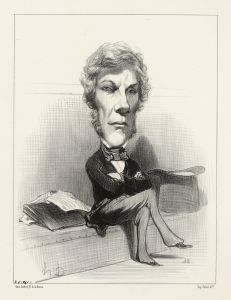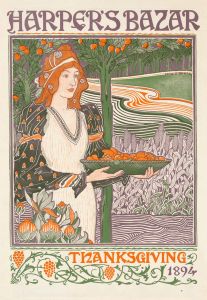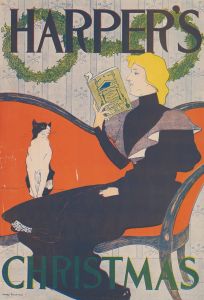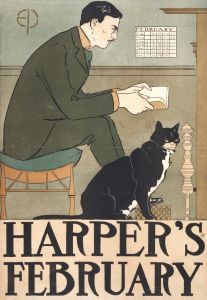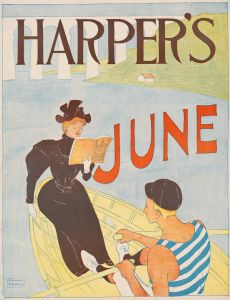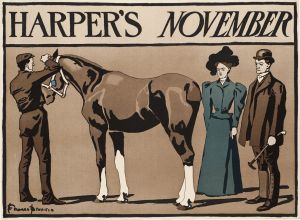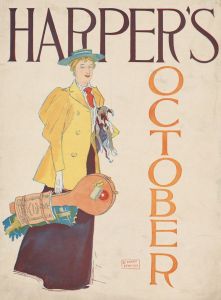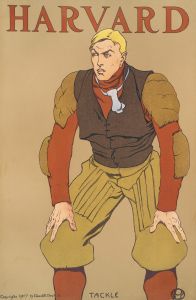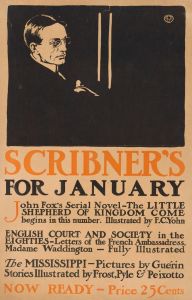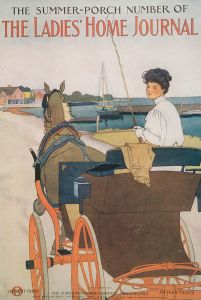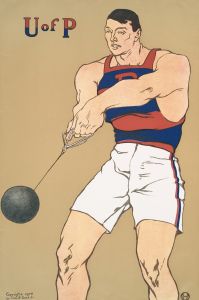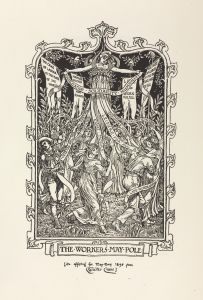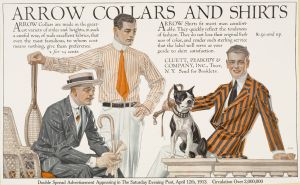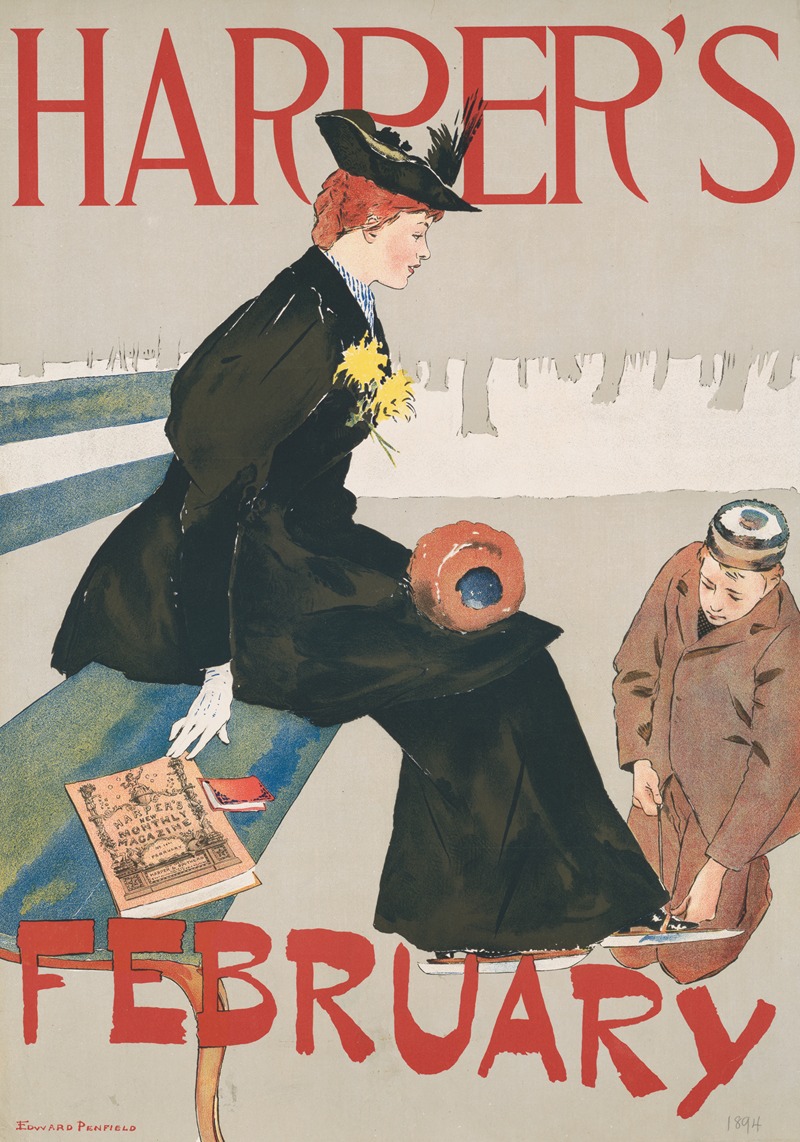
Harper’s February
A hand-painted replica of Edward Penfield’s masterpiece Harper’s February, meticulously crafted by professional artists to capture the true essence of the original. Each piece is created with museum-quality canvas and rare mineral pigments, carefully painted by experienced artists with delicate brushstrokes and rich, layered colors to perfectly recreate the texture of the original artwork. Unlike machine-printed reproductions, this hand-painted version brings the painting to life, infused with the artist’s emotions and skill in every stroke. Whether for personal collection or home decoration, it instantly elevates the artistic atmosphere of any space.
Edward Penfield was an influential American illustrator and a key figure in the development of graphic design in the late 19th and early 20th centuries. He is best known for his work as an art director for Harper's Magazine, where he created a series of monthly cover illustrations that became iconic representations of the era. One of his notable works is the cover illustration for Harper's February issue, which exemplifies his distinctive style and contribution to the field of illustration.
Edward Penfield was born in 1866 in Brooklyn, New York. He studied at the Art Students League of New York, where he was influenced by the teachings of George de Forest Brush and other prominent artists of the time. Penfield's career took a significant turn when he joined Harper & Brothers in the 1890s, eventually becoming the art director for Harper's Magazine. During his tenure, he produced a series of monthly covers that were both artistically innovative and commercially successful.
The cover illustration for Harper's February issue is a prime example of Penfield's work. It reflects the Art Nouveau style that was popular during the period, characterized by its elegant lines, stylized forms, and harmonious compositions. Penfield's covers often featured fashionable figures engaged in leisurely activities, set against simple yet effective backgrounds that highlighted the subject matter.
In the February cover, Penfield employs a limited color palette, a technique that was common in poster art of the time due to printing constraints. This limitation, however, did not hinder his creativity; rather, it allowed him to focus on strong, bold shapes and clear outlines that made his work easily recognizable and visually appealing. The use of flat colors and minimal shading is typical of Penfield's style, contributing to the modern look of his illustrations.
Penfield's work for Harper's Magazine played a significant role in elevating the status of magazine covers as an art form. His ability to blend artistic expression with commercial appeal helped set a standard for future generations of illustrators. The covers were not only promotional tools for the magazine but also collectible pieces of art that captured the spirit of the time.
Edward Penfield's influence extended beyond his work with Harper's. He was part of a broader movement that saw the rise of the poster as a popular medium for advertising and artistic expression. His contributions to graphic design and illustration have been recognized as foundational in the development of modern visual communication.
In summary, Edward Penfield's cover for Harper's February issue is a testament to his skill as an illustrator and his impact on the art world. His work remains a significant part of the history of American illustration, reflecting both the aesthetic trends of the late 19th century and the evolving role of graphic design in media.





